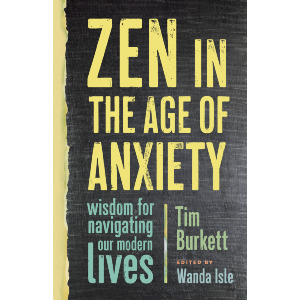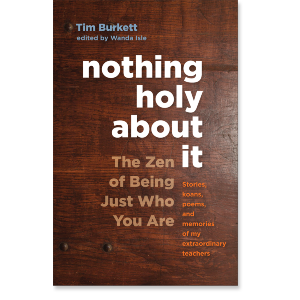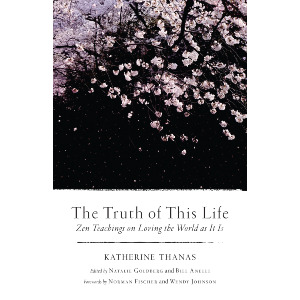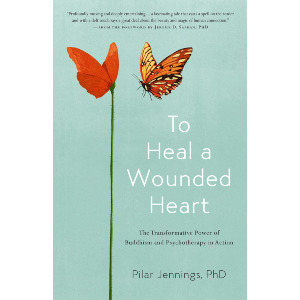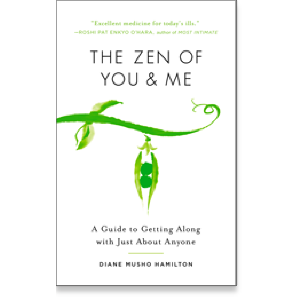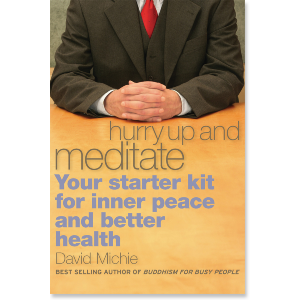
I can’t get no satisfaction
’Cause I try and I try and I try and I try
I can’t get no, I can’t get no
Satisfaction
(I Can't Get No) Satisfaction
The Rolling Stones’s first big hit in the United States was “(I Can’t Get No) Satisfaction” and is still considered by many the greatest song they ever recorded. It made the charts in 1965. I was in my fourth year at Stanford University, on the supposed fast track to success and happiness. I’d been born into an upper middle class family, I lived in the beautiful and prestigious San Francisco Bay Area, and I never gave more than a moment’s thought to the concerns about money and economic status that the previous generation had worried about during the post–World War Two era.
So you may be wondering why the lyrics of that classic Stones song would resonate so deeply with me and my generation. The reason is that, in the sixties, there was more going on than just the restless angst of a privileged generation. Younger Americans were among the first to deeply question the decisions coming out of Washington and the aggressive international path our country had taken. The anguish and actions of college students and other young people around the country polarized the nation: Peace activists (including me) rallied against the Vietnam War while returning soldiers, with mangled bodies and war-weary eyes, were honored in parades and then forgotten. Angry and often violent polarization was reflected on streets and campuses, in our art, and in our music.
And that man comes on the radio
He’s tellin’ me more and more
About some useless information
Supposed to fire my imagination
The idea of the American dream, so fulfilling to my parents and grandparents, no longer nourished the hearts and minds of many in my generation. I tried, and I tried, and I tried, but I got no satisfaction—not as a peace activist, or a student, or at my job. I got a little satisfaction in love, but then we broke up. A little satisfaction from sex, but it didn’t last very long.
A year before “Satisfaction” came on my radio, I’d begun a meditation practice with Suzuki Roshi at the San Francisco Zen Center. For a while my heart was calm and peaceful, but when the dissatisfaction returned, it seemed deeper and more impenetrable than ever.
Meditation doesn’t save us from life’s trials and tragedies. In fact, Zen meditation allows us to enter completely both the joy and darkness that make up this great life. Deep healing often begins in darkness, in times when we feel deep dissatisfaction and little or no vitality.
Meditation doesn’t save us from life’s trials and tragedies. In fact, Zen meditation allows us to enter completely both the joy and darkness that make up this great life. Deep healing often begins in darkness, in times when we feel deep dissatisfaction and little or no vitality.
The place of our deepest fears can be rich soil when it is entered into fully. As our eyes adjust to the dark, clear-seeing becomes possible. Standing firm in the darkness, without withdrawing or lashing out, we discover what motivates us in healthy, wholesome ways and what drives us to exhaustion and depression. We see for ourselves how fear-based thinking and emotional reactivity influence us individually and collectively. Fear is used by us and against us, and recognizing this truth is the first step toward healing.
This book offers an approach to life that opens us up to a new way of thinking and being in the world. The approach is not new, but too often confusing language, unfamiliar metaphors, and practices that confound and bewilder obscure it. This book is written in the style of an owner’s manual, a guide to being human, and begins by focusing on the four most troublesome areas that most of us are intimately familiar with: feelings of unworthiness, and issues surrounding sex, money, and failure. These are the outermost layers of the onion, and they must be penetrated with clear-seeing, generosity, and openness.
Year after year,
the monkey’s face
wears a monkey’s mask
—Basho, seventeenth century
Basho’s poem points to the difficulty of penetrating the onion by seeing through our fear-based thinking. But as I stayed with my meditation practice, I began to see through the layers to realize a direct correlation between the fear-based dramas playing out in my mind and my can’t-get-no-satisfaction life. Maybe you can, too.
One Step at a Time: The Footprint Stage of Practice
Every major religion includes contemplative practices that can move us beyond the confusion, disintegration, longing, and weariness associated with fear-based thinking. Often, however, we have to completely exhaust ourselves before we are ready to embark on this life-altering path.
Here in the United States, we are exhausting ourselves at a younger and younger age. I was twenty when I began my meditation practice. Meditation was an oddity then. But today more and more people are turning to this ancient practice to cope with the mental and emotional stress and weariness that have become hallmarks of American culture.
Maybe you’ve tried to meditate in the past but have lost your way and quit—perhaps repeatedly. It’s not an uncommon experience. Often people read or hear something inspiring and begin a regular practice. They’ve caught a glimpse of something meaningful, like rabbit tracks on the surface of new-fallen snow. But then the deeper teachings that support the practice become remote and incomprehensible, and the footprints fade away like tracks vanishing in falling snow.
Maybe you’ve tried to meditate in the past but have lost your way and quit—perhaps repeatedly. It’s not an uncommon experience. Often people read or hear something inspiring and begin a regular practice. They’ve caught a glimpse of something meaningful, like rabbit tracks on the surface of new-fallen snow. But then the deeper teachings that support the practice become remote and incomprehensible, and the footprints fade away like tracks vanishing in falling snow.
This is what I call the footprint stage of practice. When the tracks disappear, people become overwhelmed or discouraged and withdraw back into their frenzied life of dissatisfaction. Later, the tracks reappear, and for a time, the path is clearly marked. Repeatedly the footprints seem to disappear and reappear.
Eventually, you’ll come to realize that the tracks are everywhere—but always, the snow keeps falling and covering them up. Life is continuously unfolding in unlikely and unpredictable ways. Repeatedly, we seem to drift back into the dramas, anxieties, and worries of a fear-driven life. But this, too, may be the path. Each time we return, we are a little wiser and a little more sure-footed as we realize that the path is right where we are, even when the footprints fade from view. When the footprints are visible, we feel secure; when they vanish, we learn to trust. Even though the path is always here, the way we walk it is uniquely our own.
Our Movie-Making Mind
In 2015, forty-five years after I moved away from the Bay Area, I went back to promote my first book, Nothing Holy about It. One afternoon, I walked to Bush Street where the San Francisco Zen Center had been. It was now a senior center.
As I stood on the corner of Bush and Laguna, my mind was flooded with memories. I had practiced at the center for five years, from 1964 to 1969, with Suzuki Roshi, who became one of the most famous Zen teachers in the world. Five years may not seem like a long time to absorb Suzki’s teachings, but in the days before he was famous he had only a handful of devoted students, so I saw him frequently.
Thinking back to those days, I looked through a window into the room where the auditorium used to be, where on Saturday evenings Suzuki watched imported movies with his Japanese congregation. Then on Sunday mornings he would give dharma talks for his small group of American students. The Japanese congregation didn’t meditate or go to his dharma talks. In Japan, only the monks living in monasteries meditated and studied the teachings.
Each day as I entered the building for morning meditation, I passed a giant poster advertising the upcoming movie. A typical poster featured swords dripping with blood, decapitated limbs, and geishas in distress. These looked like pretty lousy movies by my standards. When I wanted some entertainment, I went to North Beach, where they showed artistic movies that had some depth and were emotionally moving. I felt bad that my teacher had to watch those B-rated imports.
One Sunday morning Suzuki looked tired.
“Do you have to watch movies every Saturday night?” I asked.
“Oh, yes,” he said, cheerfully. “We watch movies together on Saturday nights.”
“I’m sorry you have to watch those movies. Do you like any of them?” I asked.
“I like them all,” he said.
He liked them all? Apparently my teacher was pretty unsophisticated when it came to movies.
This was during a time when my Zen practice had become very difficult. It was my can’t-get-no-satisfaction phase, and all sorts of memories and fears were coming up in my meditation. Over and over, I relived past dramas and projected them into the future, rehearsing how I wanted to be different. The stillness and joy I’d experienced my first few months of Zen practice had vanished. I seemed to have no control over the images that cycled through my mind, on and off the cushion.
“I like them all,” was a teaching that I didn’t recognize until much later. Even though I didn’t understand the significance of those four words at the time, they stayed with me. Suzuki wasn’t judging the movies he saw. He wasn’t comparing them to the artsy films playing at North Beach. He was simply present, attentive, and engaged. This was his way.
“I like them all,” was a teaching that I didn’t recognize until much later. Even though I didn’t understand the significance of those four words at the time, they stayed with me. Suzuki wasn’t judging the movies he saw. He wasn’t comparing them to the artsy films playing at North Beach. He was simply present, attentive, and engaged. This was his way.
Today, people say that Suzuki Roshi was a great enlightened being, but I don’t know about that. He lived lightly, joyfully. That is what I remember most about him. It’s what drew me to him and continues to draw me to him, though now he lives only in my heart.
“I like them all” was a footprint along my path, one that disappeared and reappeared, over and over, until I finally got it. I realized that I could be present and attentive to the movies inside my head without getting caught up in which ones were good and which were bad.
I think this is a challenge that most of us face. We create movies in our heads to try to make sense of the world and of what’s happening around us. But these movies are based on our memories of past experiences, and if they’re so dense we can’t see beyond them, they tether us continually to the past.
We can learn something about ourselves if we look closely at these movies and recognize their genres and themes. When we’re fearful, our movies may be tension-filled dramas. When moody or anxious, gloomy melodramas. For many people, ghost stories are a favorite genre. Here’s one of mine:
In the mid-sixties, there weren’t many of us meditators, so I got to hang out with Suzuki as much as I wanted. Then we purchased Tassajara Zen Mountain Monastery, and more and more people came to practice with him. Things began to change.
I had a friend whom I’ll call Louise. She was a serious Zen student, and I appreciated her sincerity. But after a while it seemed that she was dominating Suzuki’s time and I began to appreciate her less and less. Whenever I saw her, I was overwhelmed with jealousy and confusion.
Finally, I realized what was going on. In this situation Louise was like my sister, and I was jealous of my sister my whole life because my dad seemed to give her more time and attention than me. I became aware that the movie I’d created so many years ago was now playing out even here in this calm, monastic setting, dedicated to the cultivation of stillness, compassion, and deep inner joy. I was trying my best to live in today—but memory ghosts swirled around me, separating me from what was actually going on. I felt isolated even while surrounded by kind and caring people.
This is the human situation: We often see others through our prior experiences and expectations. We are so mesmerized by these ghostly images that we don’t really encounter each other. Memory ghosts can be so dense and murky that we can’t see through them, forming a protective shell that makes us feel disconnected from life.
This is the human situation: We often see others through our prior experiences and expectations. We are so mesmerized by these ghostly images that we don’t really encounter each other. Memory ghosts can be so dense and murky that we can’t see through them, forming a protective shell that makes us feel disconnected from life.
Memory ghosts sometimes signal a deep hurt or disappointment that needs to be attended to and released. So we have to pay attention to the types of movies that cycle through our minds. If we learn to see them clearly without judgment or criticism and without getting caught up in them, they can serve a deeper purpose, becoming an inner resource that nourishes our aspiration and offers insight and emotional release.
Throughout this book, I’ll offer hints and techniques to guide you along, but in the end we learn how to do this deep inner work by doing it. If you stay with it, at some point you will begin to disidentify with your movies and experience an inner openness that allows you to remain receptive to life. Eventually, you’ll learn to recognize responses that sustain this openness. But first, you’ll have to see clearly those responses that close you down.
Caught In a Self-Centered Dream
We know so many things but we don’t know ourselves.
—Meister Eckhart
I’d like to share a story about a woman I’ll call Alice. Alice had a beautiful daughter that she was proud of. She was very involved in her daughter’s life, and she considered herself to be a good mother, but when her daughter went to college and had a psychotic break, everything changed. Alice felt responsible. This was the early seventies, a time when many people believed that mental illness was inherited from the mother. So now, in Alice’s mind, she was a bad mother. To escape her guilt, she began to drink heavily.
She went into therapy that lasted for several years, during which time she learned that her daughter’s schizophrenia had nothing to do with her. Alice became a mental health advocate, because she now felt that she was a good person with something meaningful to contribute.
Then Alice’s youngest son got kicked out of college for using drugs, and her husband left her for her best friend. Now Alice felt that she was a terrible mother, a terrible wife, and even a terrible human being.
Soon thereafter, her daughter with schizophrenia gave birth to an adorable baby that they parented together, and Alice became a happy, fulfilled mother and grandmother. A few years later, however, her daughter went off her meds, had paranoid delusions, and ran off with the child. Who did Alice think she was then?
Like Alice, many people wander through life experiencing a series of changing roles, like actors in a succession of movies. Who are we in the midst of all these roles? Are we our ideas? Are we our thoughts, our concerns, our movies? Or are we the extended feelings, the moods, the instinctual urges that underlie the movie-making world that we live in?
Meditation is about seeing the multiplicity of roles we identify with, and the way these roles continuously arise and vanish. If we hold them lightly, the roles remain transparent, allowing us to see and appreciate their ever-changing nature.
Meditation is about seeing the multiplicity of roles we identify with, and the way these roles continuously arise and vanish. If we hold them lightly, the roles remain transparent, allowing us to see and appreciate their ever-changing nature.
As Alice’s story shows, we identify with certain components of our experience, tie these components together, and call this string of events our self. This seems to be the nature of our movie-making mind. These mental movies have the capacity to either diminish or enrich our lives.
Buddha taught that what we experience as continuity arises from a continuous flow of activity, rather than a solid, unchanging self. Alice’s story points to the key to understanding the wisdom of this chapter.
KEY #1: Recognizing the self as a process frees us from a self-centered dream.
We begin to experience freedom from our habituated way of experiencing the world as we learn to see the self as a process rather than a solid being moving through time. For most of us, however, freedom from our fear-based way of thinking does not come easily.
In the thick of the forest is where you will find your freedom.
—Buddha
We never know when we’re going to find ourselves in the thick of the forest. For my friend Sydney, a long-time meditator, the discovery of freedom came through a major stroke that left her unable to speak. When I went to see her, she used a writing pad to communicate. Her hand shook uncontrollably as she wrote, “I’m okay. Learned not this face. Learned not this body.” When I looked at her, her eyes were suffused with loving acceptance.
Sydney found peace, even tranquility, after her stroke because she had sustained a regular meditation practice for many years. Even a practice of only twenty minutes a day can help you hold your movie-making response lightly.
To really penetrate the movies and follow them all the way in so as to see the patterns that produce them, however, requires more. That’s why we have Zen retreats that last from three days to a week or even longer.
A few years ago, during a long retreat, a student came to see me for a private meeting. She said, “I think it’s going well because my mind has gotten very quiet. But it’s kind of scary. Who will I be if I lose myself? How will I function in the world?” As she spoke she churned up more and more doubt until finally she exclaimed, “I think I should go home now.”
This frequently happens in Zen retreats. When you finally experience some stillness, these questions become relevant. How do you identify with non-being? There’s nothing there to identify with. It can be disconcerting at first. But it’s right here, in the thick of the forest, that we discover a wonderful freedom that our movie-making mind cannot touch.
I encouraged the retreat participant to stay with her anxiety and ride it out. She agreed to give it try. When she came to see me a couple of days later, her mood was quite different. She spoke of the stillness and peacefulness she was experiencing. “When the bell rang to end a meditation session, my body rose on its own. My body knows what to do.”
Whatever you experience in meditation becomes your teacher if you just stay with it. Even asthma can be your teacher, as my friend Eleanor discovered. Eleanor was planning a long retreat with Katagiri Roshi, then the guiding teacher of Minnesota Zen Meditation Center. She was worried about doing the retreat because she had to use an inhaler frequently. That meant she would have to use it during meditation, but she was clinging to her idea that she should not move during meditation.
Katagiri Roshi encouraged her to do the retreat. He counseled her to be with the stress in her throat if she could and to use her inhaler whenever she needed to. “Use the stress in your throat as the object of your meditation,” he said.
Eleanor began the retreat knowing that she could use her inhaler any time. But as the retreat went on, she was able to relax into the stress in her throat more and more. She stayed for the entire seven-day retreat. By the end, she noticed that her throat muscles had relaxed and her breath was not so shallow.
By being with it rather than trying to avoid or escape it, asthma became Eleanor’s thick of the forest. It became a place of freedom where before there was only limitation.
Being human can feel like being trapped—trapped in a body that demands and bullies, a mind that ridicules and spins out over every little thing, a dangerous and confounding world. But is it really that way? The next three chapters will take you into the darkest forest, to the very places where we feel most lost and most vulnerable. But you’ll have a guide and a flashlight. All you need to bring is an open mind and a willing heart. The last section of each chapter, Doing the Work, is where your eyes begin to adjust to the dark, and your own insight becomes your guide.
Core Meditation Practice for Calming and Centering
If you’re meditating at home, it’s important to designate a certain place for your practice. It can also help to create a bit of ritual that signals to your brain your intention to meditate. You might begin by closing the blinds or curtains, dimming the lights, lighting a candle, or perhaps burning a bit of incense. Take each step with your full attention. Feel the floor against your feet and the feel of the match or lighter as you light the candle; notice how the flame flares up and the smoke curls and spirals. When these tasks are performed with attentiveness, always in the same order, and with one-pointed focus, they become a calming and centering ritual. Your mind will start to settle down before you even begin the meditation.
During meditation, when your mind becomes distracted from your breath (and it will, over and over), try to notice the distraction and then return without comment or reactivity. When some emotional reactivity does bubble up, say frustration or irritation, focus on the bodily sensations of frustration or irritation rather than your thoughts. Stay with the sensations until they dissolve and then return to the object of focus. Don’t try to suppress your thoughts. The point is to become aware of your thought patterns by noticing the arising of a pattern without getting caught up in it. That’s why we stay focused on the breath, using it as an anchor so we can see our patterns without reinforcing them.
During meditation, when your mind becomes distracted from your breath (and it will, over and over), try to notice the distraction and then return without comment or reactivity. When some emotional reactivity does bubble up, say frustration or irritation, focus on the bodily sensations of frustration or irritation rather than your thoughts. Stay with the sensations until they dissolve and then return to the object of focus. Don’t try to suppress your thoughts.
Start by taking a few deep breaths and notice where in your body you feel your breath most prominently. It may be in your nostrils, or as your breath moves down your throat, or in the rise and fall of your chest or belly. Just rest your focus in that area and then allow your breath to return to its natural rhythm, without trying to control it. If your breath is shallow and quick, let it be shallow and quick; if it’s slow and deep, let it be slow and deep. Feel the openness that allows the breath to come and go on its own, without hindrance. Bring that same non-attached openness to whatever arises in your mind.
Allowing your breath, thoughts, emotions, and sensations to arise and then dissolve on their own is one of the most difficult things for a human being to do. The specific nature of the difficulty reveals something about our own patterns of reactivity. Is it difficult to let your breath be, without controlling or judging? Do you get agitated or angry when you catch your mind wandering off? You can start to free yourself from your inner control freak by simply observing the rhythm of your own breath without interfering and then extending that gentle attentiveness to your thoughts and emotions as they arise.
As we follow the natural rhythm of our breath, we begin to discover in an experiential way that our thoughts, sensations, and emotions come and go as naturally as the breath if we do not cling to them or try to avoid them. Of course emotions are more viscous and slow-moving than breath, but they come and go nevertheless, because this is the natural rhythm of life. It is only our fear that we’ll be overwhelmed by our emotions or do something stupid that makes us feel out of balance or out of sync with reality. Meditation gives us the opportunity to get to know our emotions in an intimate way so we’re comfortable with them. Even the strong emotions that we try so hard to avoid become fresh new avenues of insight and deepen our capacity for compassion.
Doing the Work
1. Think for a moment about a personal narrative—a mental movie—that you play over and over in your mind. As an antidote, imagine the unfolding of an opposite story. See if you can find a memory that affirms this new story line. Or you may bring to mind a memory that supports the old story line—and open yourself up to a new interpretation.
2. Recall a time when you found yourself in the thick of the forest. What did this experience teach you about yourself?
Related Books
$16.95 - Paperback
$17.95 - Paperback
$16.95 - Paperback
$18.95 - Paperback
$12.95 - Paperback
$22.95 - Paperback



